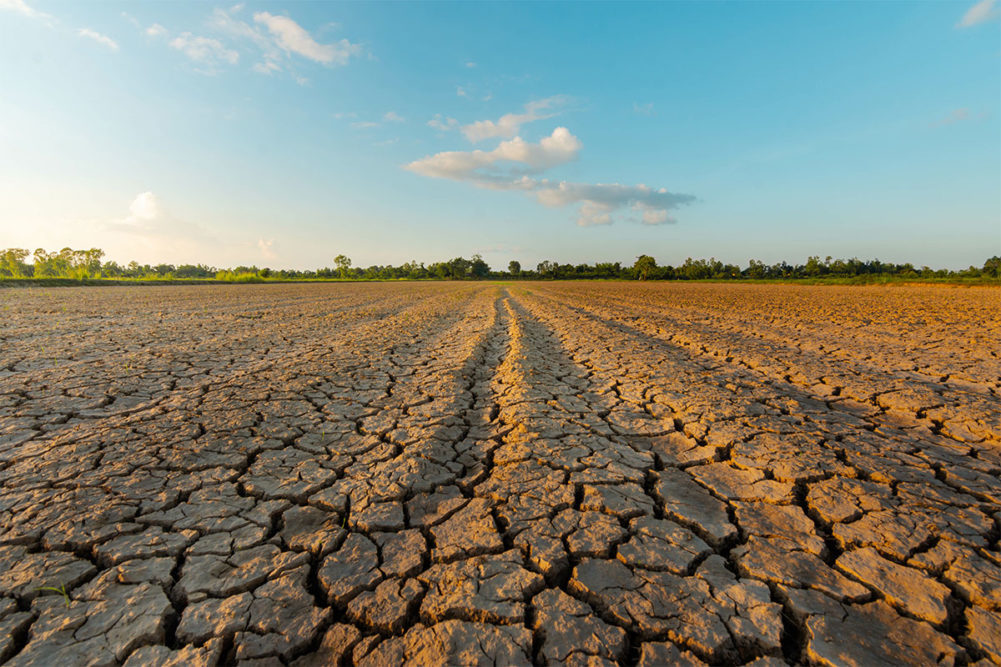KANSAS CITY — The peril to global crop production posed by climate change has been a subject of discussion for decades, but concern more recently has been rising about a particular risk — the heightened chances of extensive crop losses occurring in multiple major growing areas in a single year.
Researchers have been looking at this potential threat for several years, but voices have been growing louder.
In his latest column in this journal, the meteorologist Drew Lerner likened the risk to a lethal sport.
“How much longer can this game of Russian roulette continue before several of the world’s most important food producers end up in drought together?” Mr. Lerner asked. “The potential disaster that looms is a great concern, and today’s world water shortages only exacerbate the potential situation."
Toward the end of his column, Mr. Lerner painted a fearsome image: “One of these years a food shortage crisis will develop more severely than anything imagined.”
A few weeks earlier, researchers published a paper in Climate and Atmospheric Science warning that extreme temperatures that would have occurred once in a century in the US hard winter states are now likely to occur once every six years. In China, similar severe weather is likely once every 16 years.
The authors of “Potential for surprising heat and drought events in wheat-producing regions of USA and China,” led by Erin Coughlan de Perez, PhD, of the Feinstein International School at Tufts University, caution that climate change already is “causing unprecedented events globally.” “Simultaneous shocks to major food grain production areas (breadbaskets) can dramatically influence the price and availability of staple foods,” they said. Worsening the threat are rising temperatures. While crop yields historically do not correlate with average temperatures, the researchers said heat the past several years has reached levels that exceed critical thresholds above which wheat enzymes break down during the growing cycle.
Reviewing the data and projections based on the current climate situation, the researchers suggest “several regions might have been ‘lucky’ in terms of their recent experience of extreme events.” Given that the data used in the study reflects production figures through 2020, the assessment seemed prescient. The three years that followed — 2021-23 — are among the worst three-year streaks of crop misfortune experienced in the hard winter states since the 1930s.
Notwithstanding the difficulties, the threat the researchers and Mr. Lerner address remains hypothetical. There is no evidence yet of major disruptions in food supplies due to simultaneous crop problems. To the contrary, year-to-year changes in total global crop production have been narrowing, not becoming more volatile. While every major growing region has endured severe crop losses on multiple occasions over the past 50 years, the incidents rarely cause more than a ripple to the world’s grain supply. Since 1970, global production of grains has decreased by 3% or more from one year to the next only seven times, the most recent being the 2002-03 crop. Over the past 10 years, the worst single year global crop decrease was 2%, in 2022-23.
Should steps be taken preemptively to prepare for potential disruptions that would occur in the event of major episodes simultaneously? The researchers pragmatically note “adaptations tend to be spurred by personal experience of extreme events.”
Still steps recommended in the paper make sense regardless of whether the doomsday scenario envisaged materializes. Specifically, they suggested stepped-up “research to find genetic improvements to wheat varieties that preserve yields in drier and hotter conditions.” In recent comments, longtime columnist Robbin Johnson identified other valuable steps to take. He noted food shortages are caused by man-made events (war, trade barriers, civil strife) more often than weather/climate. He suggested that in addition to biotechnology, trade reform and food financing backstops for the poorest countries may be “cheap insurance” against a wide range of threats. Such thoughtful steps would help prevent or mitigate the effects of the dire scenario picture by the researchers.

